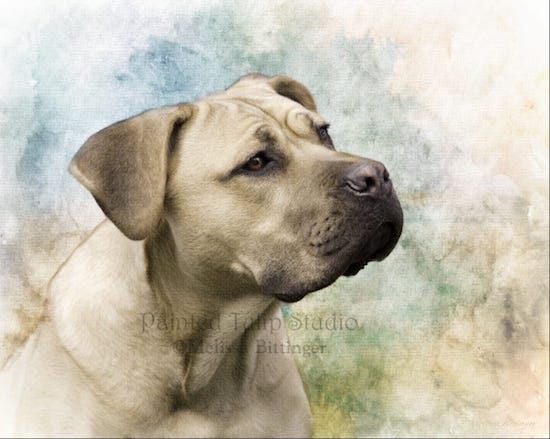
A straw stack is what it sounds like: A pile or stack of straw from which grain has been threshed. Search on the internet for “straw stack dogs,” and you’re most apt to find images of (wait for it), dogs sitting on straw stacks.
There is another meaning for the term, but as it’s more obscure (and old), it’s not going to show up in the top results of a search. It has to do with a Cane Corso color.
It’s best to first review the colors in this breed that are accepted by the AKC: Black, lighter and darker shades of gray, lighter and darker shades of fawn, and red. Brindling is allowed on all of these colors. Solid fawn and red, including lighter and darker shades, have a black or gray mask. The mask does not go beyond the eyes. There may be a white patch on the chest, throat, chin, backs of the pasterns, and on the toes. Disqualification – Any color with tan pattern markings as seen in black-and-tan breeds.
Back in the day in old Italy, creamy, light colored Cane Corsi were tasked with guarding straw stacks that contained hay, forage, and wheat – all the things that would feed the humans and animals. These stacks also provided shelter to the farm animals, cats and dog included. Straw stacks were an important part of farm life.
In our view, it isn’t helpful to discuss only those aspects of a breed that are acceptable according to a breed standard. Potential – and sometimes inexperienced – Cane Corso owners may not know the difference between the fawn and straw colors, or that one is acceptable in a show ring but the other is not. We share such information as a way to caution prospective owners to be wary of a breeder who “specializes” in any one coat color, or sells non-standard colors for ridiculous prices. Too often, soundness is made secondary to producing a “rare” color, and in the end, both the dog and the owners pay the price.
Image: Cane Corso Portrait by Melissa Bittinger/ is available for purchase as a print here
